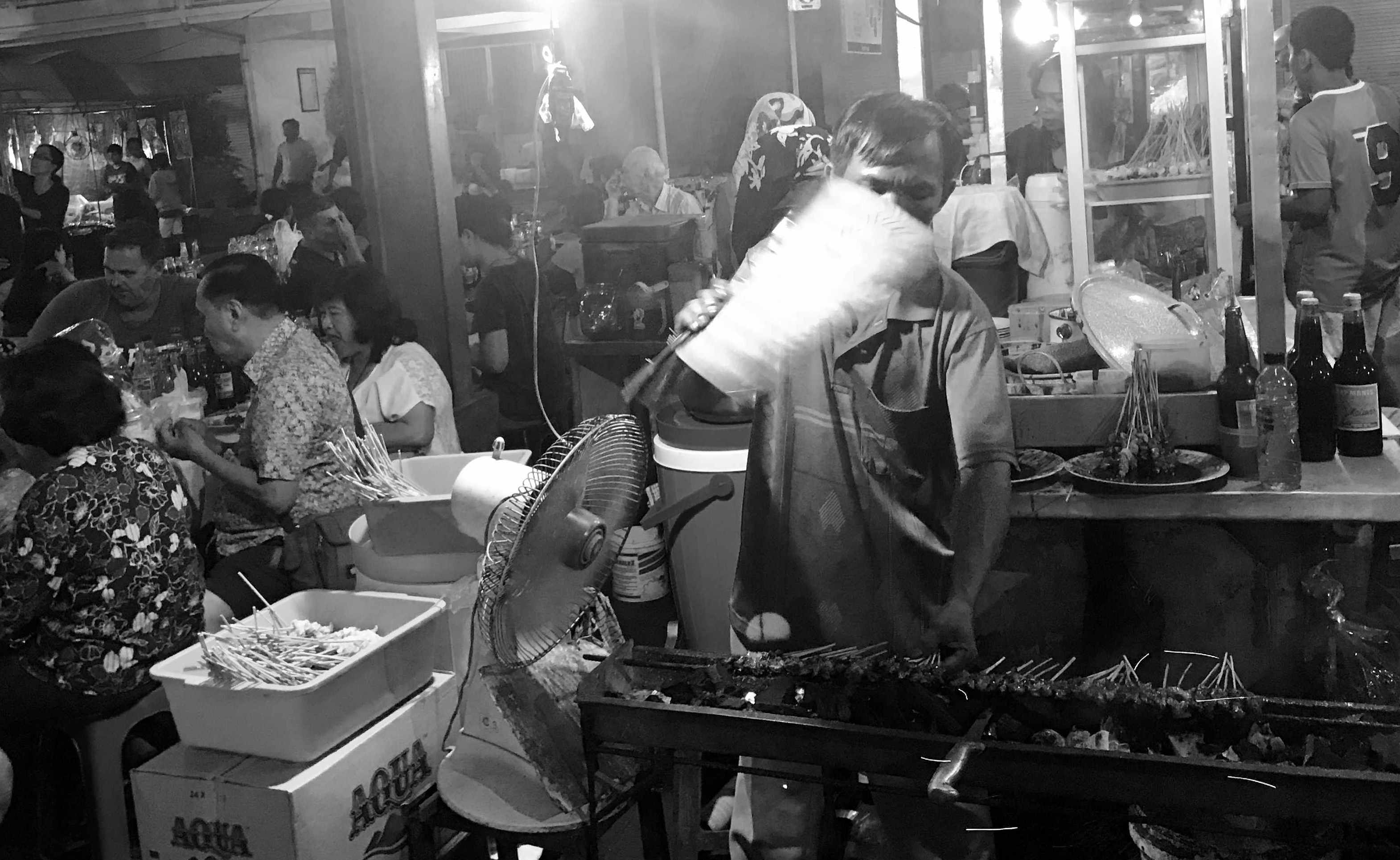Bali’s street food is fast, cheap, and delicious. It’s got full-on flavors, carb-heavy portions, and an addictive kick of spice — and it’s the kind of no-frills dining that just keeps us coming back for more.
It’s a great hangover cure (which we defo need from time-to-time with all the epic cocktails on the island), too. Double win. Additionally, some things like jamu, make for a pretty good flu-fighter, as well.
Often times, eating Balinese food also means lots of sugar and fatty proteins, and heavy carbs. That means it’s also usually a pretty far cry from healthy eats, but no one can deny that Bali’s traditional food has soul. Locals are fiercely proud of their culinary heritage, and rightly so. Recipes are like treasure; they are passed down between generations, and every family has its own special version of sambal matah (a raw chili relish, unique to Bali).
As Sanur is home to some of the most talked-about warung (roadside eateries) on the island, we decided to put together a list of the good and the great warung in the neighborhood. Here are our findings.
Dapur Sanur
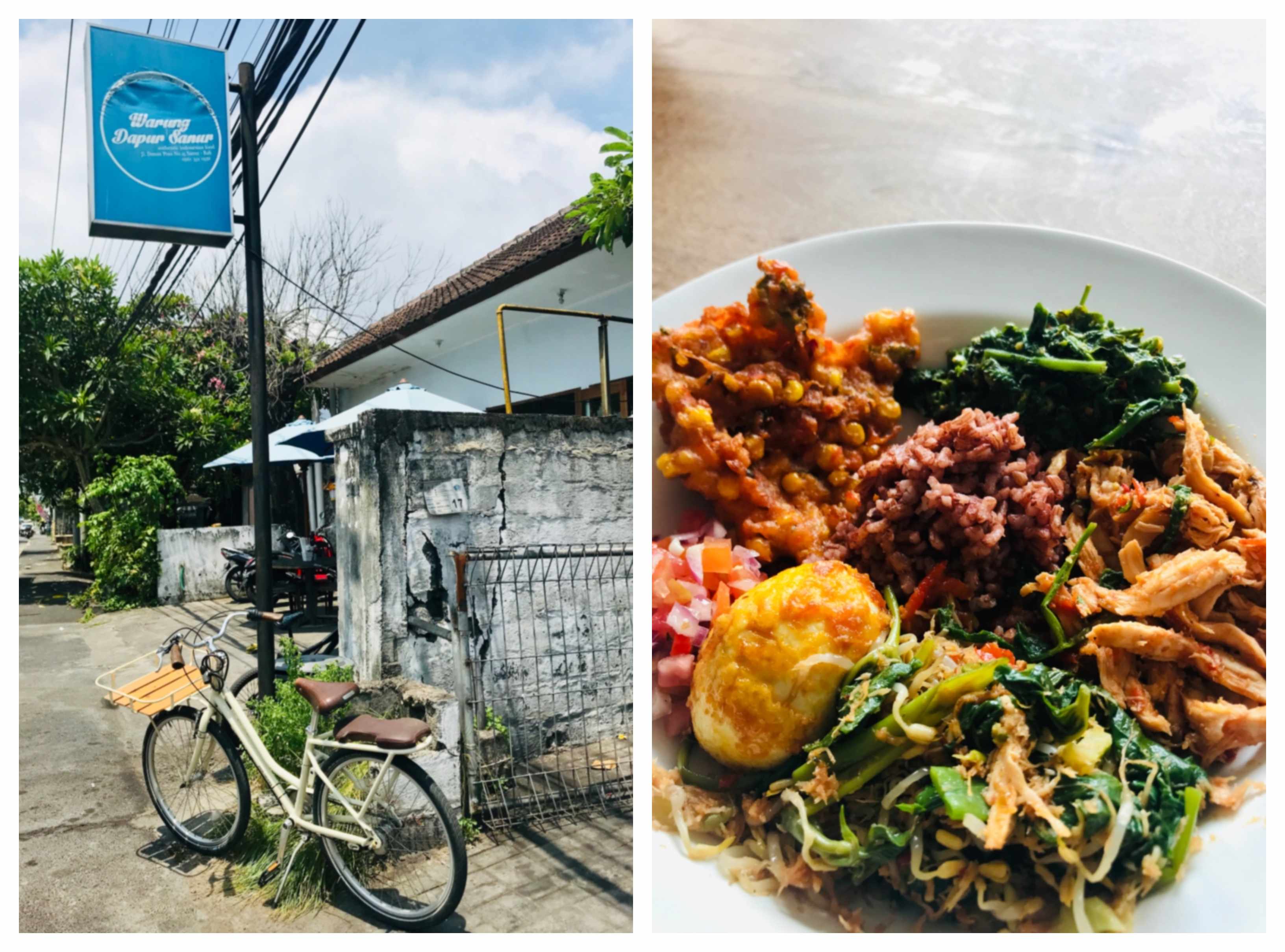
Cheap-and-cheerful Dapur Sanur is a go-to for nasi campur (rice with your choice from a pick ‘n’ mix counter of sides). Service is warteg-style; which means you point at what takes your fancy from behind the glass and they pile your plate high.
You can choose from three types of rice (red, yellow, or white), and about 30 different side dishes, from Bali, Sulawesi, Java and Sumatra. Sapi rendang (coconut-braised beef from Padang), cakalang (Manado-style spicy shredded fish), perkedel jagung (fried sweet corn fritters), tempe orek (sweet and crispy tempeh), terong balado (spicy eggplant), gulai singkong (cassava leaf curry), and urab (Balinese salad of bean sprouts, green beans and shredded coconut) are just a handful of the heady, delicious highlights.
What’s cool about this place is the variety — there’s enough to keep fussy eaters, vegetarians and carnivores all happy. And refreshingly, the food isn’t too oily, everything tastes fresh and MSG-free. By 2pm, stocks can be sadly depleted so best to get there by noon for the best selection.
BILL: IDR52.000 (US$3.59)
Dapur Sanur is at Jl. Danau Poso, No. 15
Open 10am – 8pm
Warung Mak Beng
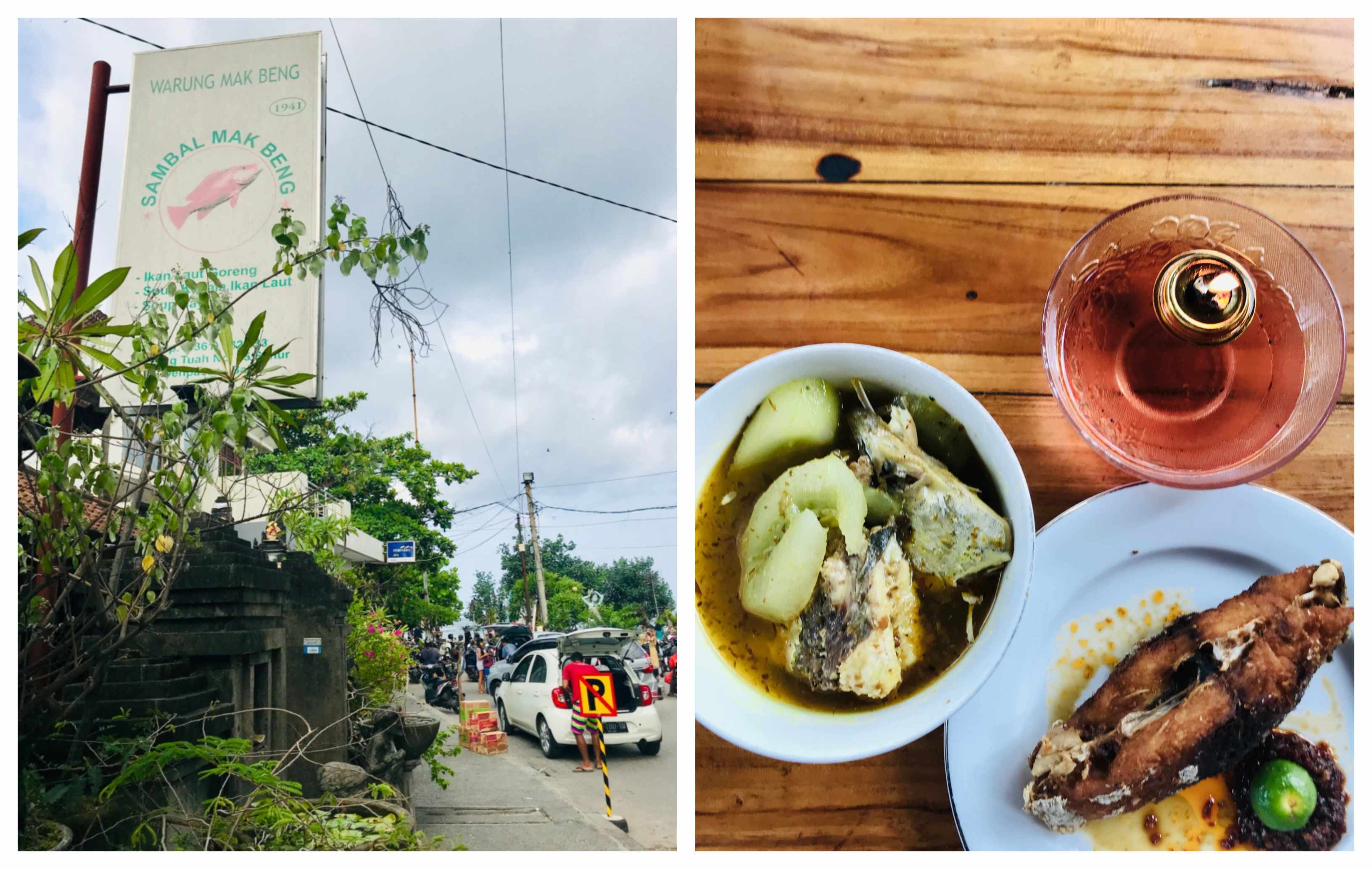
Mak Beng has been dishing up steaming fish head soup since the end of the colonial era (est. 1941, to be precise). As a result, it’s a bit of a Sanur institution, revered by locals and sought out by many a foreign backpacker whose dining due diligence led them there. Its location, slap-bang on the route to catch the Lembongan and Penida fast boats, makes it a popular stop-off for those heading to the islands.
Though Mak Beng (literally ‘mama Beng’) passed away years ago, the place is still family-run and the menu has been the same for decades. There’s only one thing to eat here (well, three) — spicy fish soup, deep-fried fish fillet, and rice, all served with a dollop of shrimpy sambal (chili relish).
Beng’s broth comes with bobbing fish heads and slices of steamed cucumber. It’s the kind of meal that makes you noticeably sweat, and it’s loaded with enough turmeric to cure a common cold. Lemongrass and lime juice add a welcome bit of freshness, but the warm soggy cucumber is a bit odd. The deep fried fish is delivered bones ‘n all, and needs a good smothering in Beng’s sambal terasi, (an earthy chili relish made from shrimp paste), for flavor and moisture.
All in all, it’s great stuff — perhaps not the prettiest fare, but wonderfully aromatic, and spicy enough to make grown men weep.
BILL: IDR48.000 (US$3.31)
Warung Mak Beng is at Jl. Hang Tuah No. 45
Open 8am – 10pm
Warung Adi
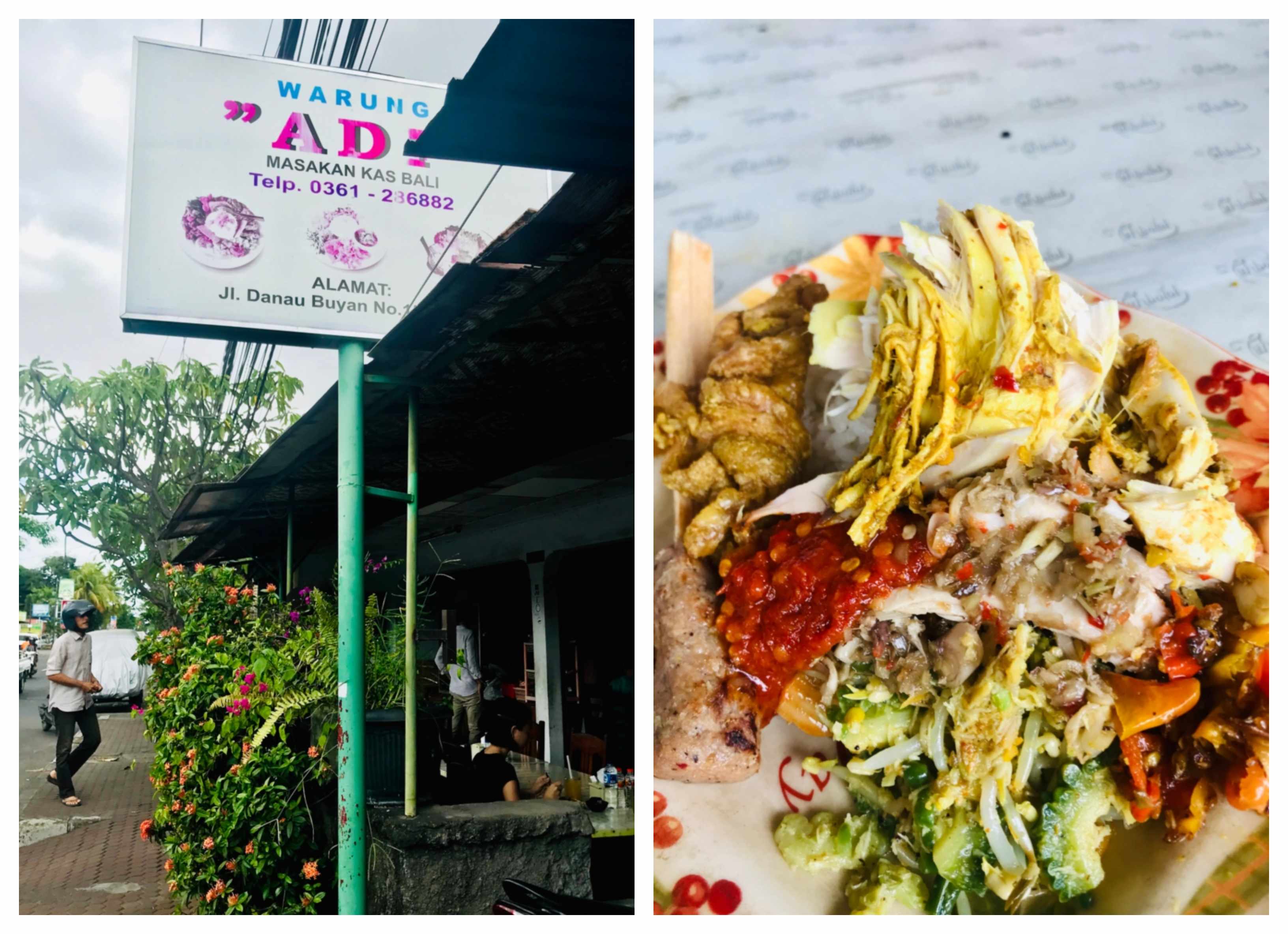
We ended up at Warung Adi by luck, and we’ll admit, also by default. The initial plan was to road-test Men Weti’s 48-year old warung near Sindhu beach, a place famous for its nasi ayam Bali (Bali-style chicken with rice and assorted sides). But, it was was closed (a security guard said that the cook had been sick for a while), so we headed for the next best thing, Warung Adi.
Eating at Warung Adi is a bit like sitting down for a family meal. It’s warm and inviting with simple but neatly kept tables, photos on the walls, and smiley, aproned grandmas serving up lunch. The house specialty is nasi ayam komplit (komplit basically means ‘give me everything you’ve got).
Moist, curry-flavored shreds of chicken, grilled pork satay, telor balado (boiled egg smothered in that addictive fishy sambal), urap (warm salad of bean sprouts, bitter melon, green beans and shredded coconut), sweet and spicy peanuts, and crispy chicken skin make up a typical portion. Adi’s chunkier-than-usual sambal adds yet more spice and flavor, though each separate item is tasty enough on its own.
President Jokowi is said to be among Adi’s fans, and if you look at the family portraits closely, you’ll see his picture, nasi ayam in tow, hanging on the wall.
BILL: IDR42.000 (US$2.90)
Warung Adi is at Jl. Danau Buyan, No. 15
Open 7am – 3:30pm
Nasi Lawar Kodi
Nyoman, our Grab driver, insists that Nasi Lawar Kodi is the place to eat authentic lawar (a Balinese salad of minced pork meat and fat, grated coconut). Slightly concerning, too, is the fact that he also told us that they used to serve lawar penyu (turtle) until it was made illegal a few years back.
Getting to Kodi’s is a bit like a maze challenge, but through dimly lit, slightly sketchy-looking alleyways. If you manage to find it, you might be surprised at how big the place is. There are long wooden tables with room for about 50 planted under a Javanese joglo-style roof.
Behind the glass counter, the evening’s fare is displayed—there’s urutan (Balinese sausages made with pork meat, fat, intestines and spices), sate babi (pork satay) and various types of lawar. While the traditional version is made with pig’s blood, Kodi also offers lawar putih, a lawar for beginners with shredded chicken, jackfruit and coconut; chili, lime, and heap of Balinese spices.
A porky plateful includes sweet and sticky belly pork, delicious lemongrass-braised pork meat, crackling, some unidentified crispy bits, and your lawar of choice. All comes with rice, eye-wateringly spicy sambal, and some knuckle broth for good measure.
BILL: IDR35.000 (US$2.41)
Nasi Lawar Kodi is at Gg. Harum No. 10, Jl. Sekuta
Open 6pm – 7am
Warung Men Runtu
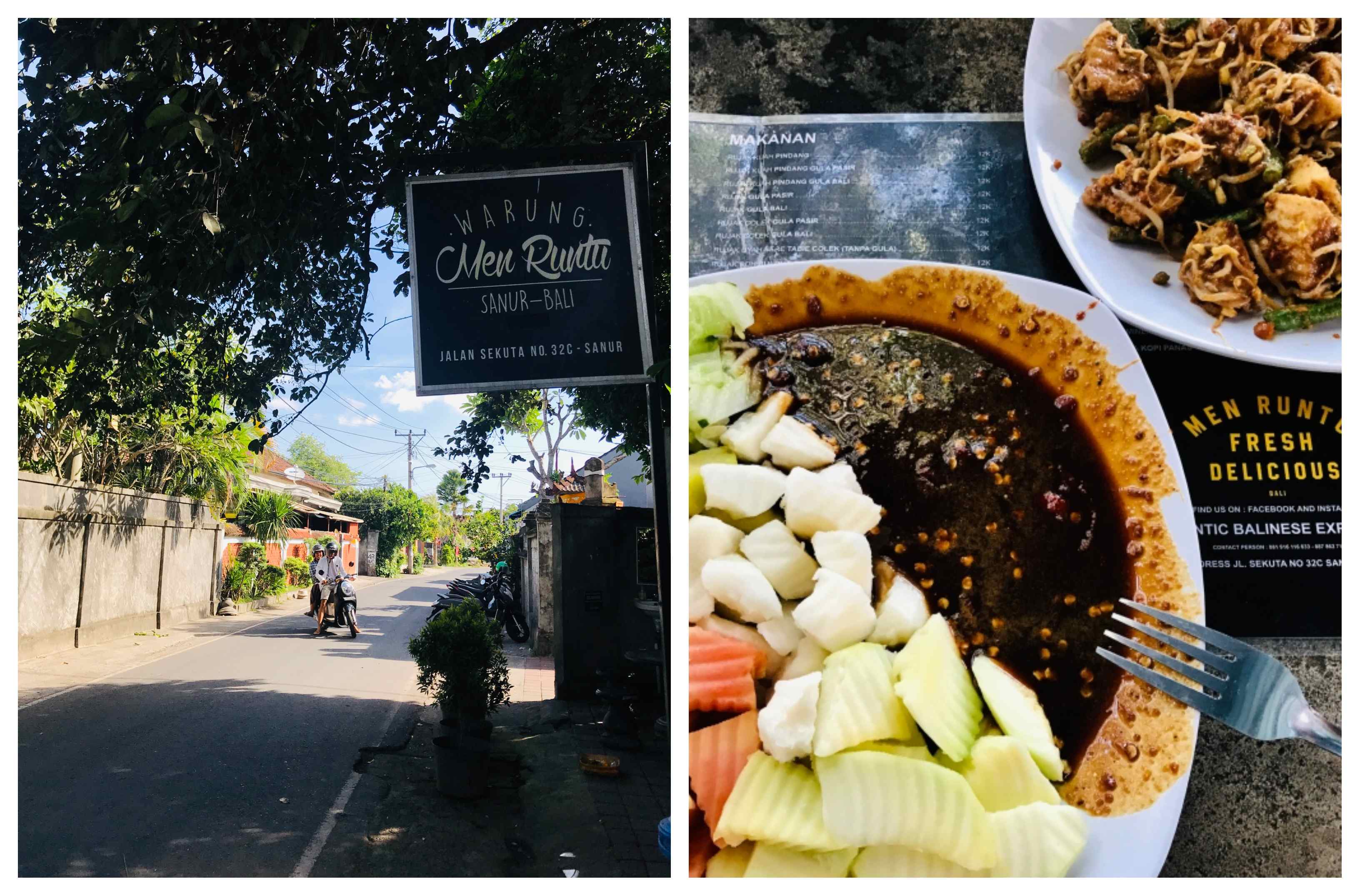
Round concrete tables spill out onto the street at Warung Men Runtu, an eatery specializing in buah rujak (tangy fruit with a sweet and spicy sauce). The place is a hit with locals, and for most of the day, the majority of seats are occupied.
Runtu offers twelve variations on rujak, adding ingredients like bulong boni (seaweed) and kuah pindang (salty broth made with shrimp paste and chilli) to the mix. Her best-selling rujak however is still the rujak gula Bali, a tropical plateful of under-ripe fruit served with a sticky dipping sauce of palm sugar, tamarind, peanuts, and chilies.
Another Runtu signature is tipat cantok, which is kind of like an Indonesian version of gnocchi. Rice dumplings are spiced up a generous dousing of spicy peanut dressing and sprinkling of bean sprouts. It’s delicious for the first few mouthfuls, but, fair warning — can become a bit too rich and cloying to commit to a full portion. We’d recommend sharing this as a side. An added plus: Dishes come in at a wonderfully cheap IDR11,000 (US$0.75) each.
BILL: IDR32.000 (US$2.20)
Warung Men Runtu is at Jl. Sekuta, No. 32C
Open noon – 7pm
Cover image: A satay seller at Pasar Sindhu, Sanur’s night market (Photo: Coconuts Bali)
MORE BALI FOOD & DRINK
Mana: We stan the pork belly tacos and cliff-top views at this Uluwatu restaurant
NamNam Noodle Bar: What to order (and what not to) at Petitenget’s new pho spot
